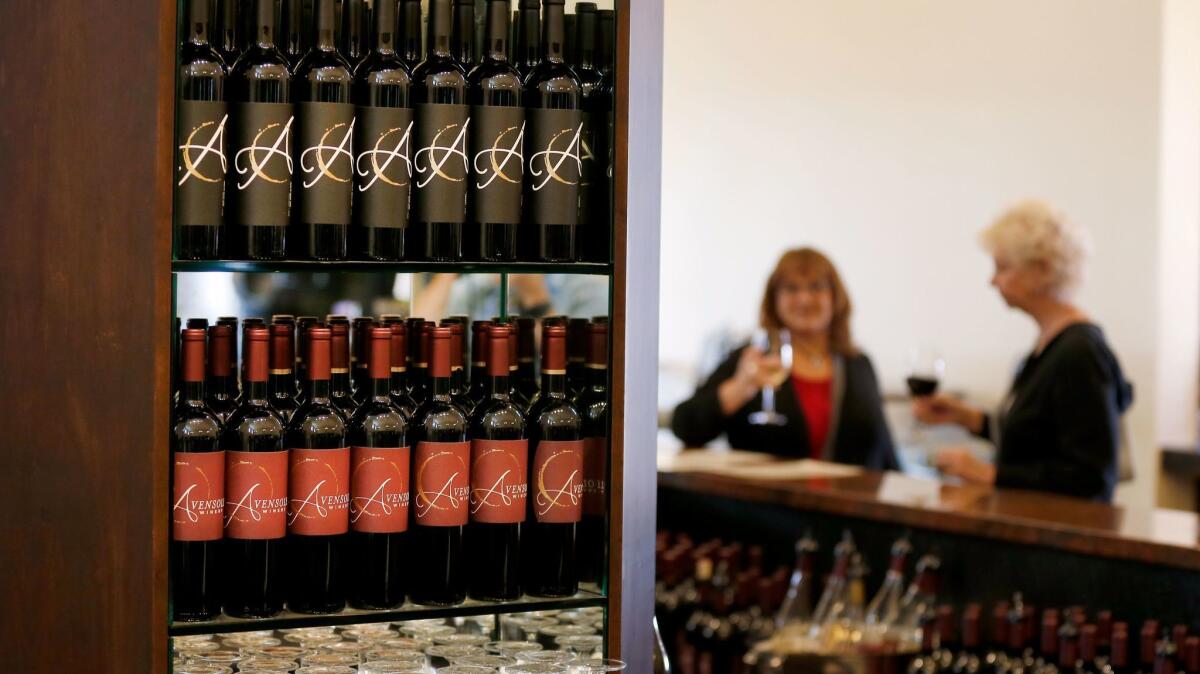As Napa and Sonoma counties recover from fires, Temecula vies to become tourist destination

Even when the devastating October fires kept tourists away from Napa and Sonoma, wine lovers did not turn to the Temecula Valley.
Instead, many vacationers who canceled trips to Napa and Sonoma counties during the fires booked trips to another wine-drinkers getaway: Paso Robles, near California’s Central Coast.
“Paso Robles did much better after the fires,” said John Kelliher, co-founder of Grapeline Wine Tours, a bus line company that offers tours of wineries throughout the state.
But the Temecula Valley, determined to shake off its reputation as the state’s second-tier — or possibly even third-tier — wine region, is taking steps to boost its meager profile among California tourists. The burgeoning Southern California wine region is in the midst of an ambitious, multi-pronged plan that includes improving the quality of its wine, doubling the number of wineries and opening or expanding several hotels and resorts.
“We are becoming a destination that people want to come to,” said Stephanie Staab, the marketing and business development manager at Avensole Winery, one of about 40 wineries in the Temecula Valley.
The wine region in the southwest corner of Riverside County is smaller and newer to winemaking than its Northern California rivals. The region began to develop into a serious wine producer in the 1980s and is home to only a fraction of the more than 4,600 wineries statewide.
The Temecula Valley hosted nearly 2.7 million visitors last year, generating $718 million in spending, according to a study by consultant Dean Runyan Associates.
By comparison, Napa Valley welcomed 3.5 million visitors last year, generating $1.9 billion in spending, according to Visit Napa Valley, the tourism board for the region.
Industry experts say spending in Napa Valley is much higher because visitors tend to stay longer: three days on average in the Northern California wine region, compared with only two days for Temecula.
But Temecula Valley has a major advantage over its competitors: It is within a 90-minute drive for more than 20 million potential customers in Southern California. In comparison, roughly 7 million people reside in the nine-county greater Bay Area region that includes Napa.
“Temecula has a much bigger upside,” Kelliher said.
To entice more visitors and spur growth, Temecula wineries have pushed forward a wine country community plan that is designed to make building new wineries easier. The Riverside County Board of Supervisors gave final approval to the plan Dec. 5, changing the zoning on 156 parcels, totaling 2,104 acres.
With the zoning changes, the region would be able to support twice as many wineries in the valley.
Also, businesses in Temecula Valley last year approved a tourism marketing district that adds a 2% tax on room rentals in the area to pay for campaigns to promote the region.
To lay the groundwork for future growth, the Eastern Municipal Water District in Riverside County completed a $19.7-million project in 2015 to hook all the existing wineries along Rancho California Road — the main thoroughfare for the wine region — to the local sewer system.
The wineries previously relied on septic tanks for their sewer service, which were prone to failure, according to water district officials who say the district is now working on approving the infrastructure so new wineries can hook into the sewer system.
In addition to those efforts, individual businesses in the Temecula Valley have been investing heavily to draw more visitors.
The Pechanga Resort and Casino in Temecula is a few months away from completing a $285-million expansion, which would make it the biggest Indian casino hotel in the state, with more than 1,000 rooms and suites and 13 restaurants.
Also, a 135-acre winery project, the biggest and most luxurious resort proposed for the Temecula Valley, is under review by county planning officials and is expected to come up for final approval within six months. The project, dubbed Twelve Oaks, is expected to include a Marriott-branded hotel.
Europa Village, a tasting room and events center in Temecula, plans to begin major construction next year on a 40-acre expansion that will include three theme villages, each with a different European setting. The project, which will include new wineries, luxury hotel suites, restaurants and shops, is expected to be completed by 2020.
Several other winery projects, many backed by Chinese investors, are under development in Temecula Valley.
Temecula Valley’s effort to become a tourist hot spot has been held back by its reputation for wines that don’t measure up to the quality of wine produced in Northern California.
But Temecula wine producers say that has been changing. They point out that since 2014, Temecula Valley wineries have won several silver and gold awards in the California State Fair wine competition — a contest that had previously been dominated by wines from Napa and Sonoma counties.
Part of the turnaround dates back to the 1990s, when the infestation of the glassy-winged sharpshooter destroyed hundreds of acres of vineyards.
“At that point, more knowledgeable people started to come in and really plant the grape varietals that grow best in that soil,” said Jeff Comerchero, a Temecula City Council member and former mayor. “The quality of Temecula wines has been elevated exponentially.”
Kim Baily, who runs Baily’s restaurant in Old Town Temecula, said the valley’s reputation has been improving lately, a change she has noticed when she visits Los Angeles.
“When I would go to L.A., people would say, ‘Where the hell is Temecula?’” she said. “Now when I go up there, people say, ‘Oh, Temecula, I’ve been there for wine tasting.’”
To read more about the travel and tourism industries, follow @hugomartin on Twitter.







